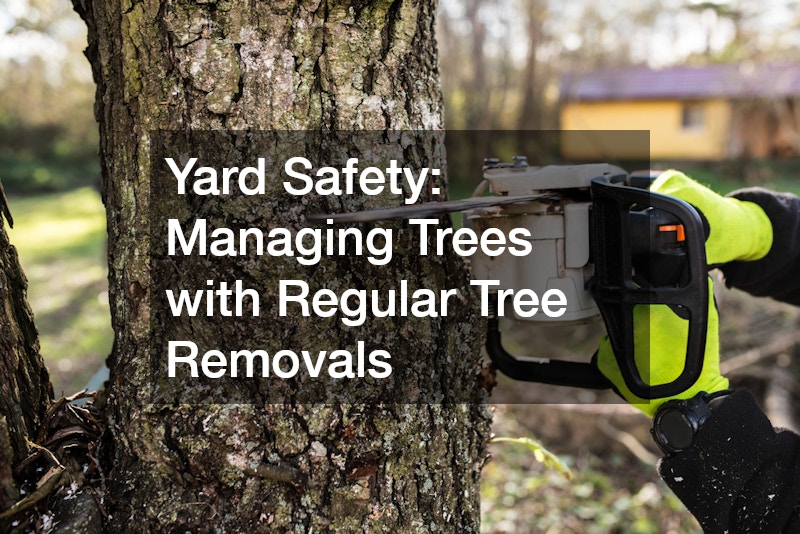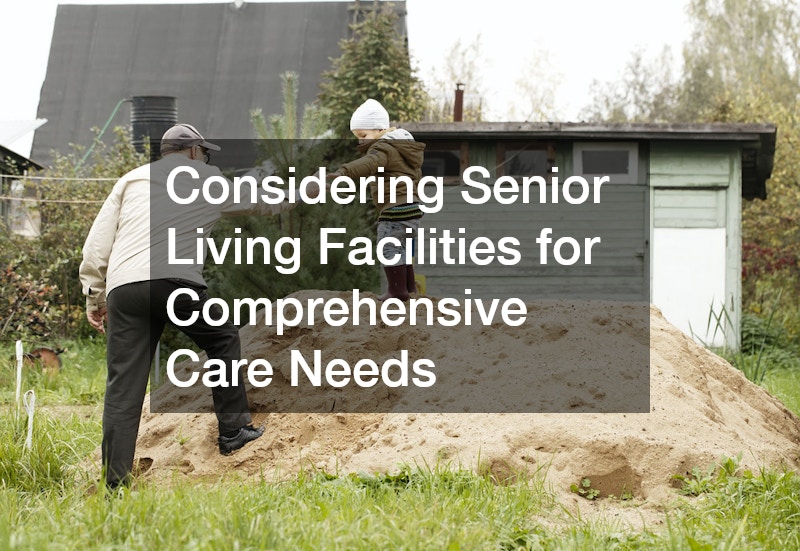Creating a Safe and Comfy Home for All Ages Essential Tips for Families

Introduction: Building a Comfy and Safe Home for All Family Members
In today’s fast-paced world, creating comfy homes that cater to the needs of all family members is more important than ever. From ensuring the safety of a toddler wandering through the house to accommodating the unique needs of seniors, a home must balance safety, comfort, and functionality. A few strategic adjustments can make a significant impact in transforming a house into a welcoming haven for the entire family.
Statistics suggest that comfy homes are a top priority for many families, with 88% of people expressing a desire for homes that accommodate multi-generational family members, according to AARP (2021). This growing trend highlights the importance of designing living spaces that serve every family member, from the youngest to the oldest. Whether through practical enhancements or careful planning, homeowners can cultivate an environment that fosters togetherness and happiness.
The journey to achieving comfy homes begins with thoughtful assessments and well-considered improvements. By concentrating on key aspects such as outdoor spaces, accessibility, and storage, families can make their homes supportive, secure, and delightful to live in. This article outlines various strategies and tips to help create a safe and enjoyable atmosphere suitable for all ages.
Secure Outdoor Spaces: Installing Patio Enclosures for Family-Friendly Fun
Patio enclosures are a fantastic addition to any home looking to expand its living space and enhance safety. By enclosing your patio, you can create an environment that is not only free from pests but also protected from adverse weather conditions. This ensures that families can enjoy outdoor activities and social gatherings regardless of seasonal limitations.
For families with young children, patio enclosures provide a secure area where kids can play without constant supervision. Such controlled environments make it easier to monitor children’s activities while allowing parents to indulge in some relaxation. Moreover, these spaces can be customized with child-friendly elements to further enhance safety measures.
Choosing the right materials and style for your patio enclosures is crucial. Not only should they complement the overall aesthetic of your home, but they should also offer UV protection to prevent exposure to harmful sun rays. By making these thoughtful choices, you contribute to the comfy homes lifestyle that embraces both functionality and beauty.
Tip: When planning a patio enclosure, consider incorporating child-proof screens or mesh that keep curious little ones safe from wandering off. Install lockable gates to further enhance security, especially in areas with easy access to the outdoors. For privacy, consider frosted or tinted glass panels that provide protection from the sun while allowing natural light to filter in. Additionally, add cushioned furniture and rugs that are safe for kids to play on and easy to clean. These small touches ensure your patio becomes a multi-purpose space that’s both safe and cozy for the whole family
Healthy Swimming: How to Lower Pool pH Without Chemicals
For families with swimming pools, maintaining the ideal pH level is essential to ensure a safe swimming experience. Traditional methods often involve the use of chemicals, but many eco-conscious families seek to lower pool pH without chemicals to protect both the environment and their health. One effective natural method involves the use of aeration, which reduces pH levels through increased oxygen exposure.
Aeration is not only effective in managing chemical usage but also fosters healthier water conditions for children and those with sensitive skin. An alternative to this method includes utilizing baking soda, particularly for minor pH adjustments. This simple household item helps balance the water’s pH levels without the need for harsh chemicals.
Regularly monitoring the pool’s pH is critical in preventing bacteria from taking hold, thus ensuring a clean and safe swimming area. By adopting natural pH-lowering strategies, families can commit to healthier swimming practices that align with their values. Incorporating such practices contributes to the philosophy of comfy homes that prioritize the well-being of all occupants.
Tip: Use a simple pool test kit weekly to monitor pH levels. To lower pH without chemicals, try using a water fountain or cascading water feature to help aerate and naturally adjust the pH. Installing a solar-powered pool pump can also help with maintaining the water’s balance. If you use baking soda, be sure to dissolve it in water before adding it to the pool to ensure even distribution. For families with young swimmers, it’s essential to prioritize proper water sanitation practices, using a cover when the pool is not in use to prevent debris buildup.
Regular Pool Cleaning for a Safe and Inviting Swimming Area
Regular pool cleaning is another essential step in maintaining a hygienic swimming area that is welcoming to family members and guests alike. Establishing a weekly routine that includes skimming, vacuuming, and maintaining the filtration system can dramatically reduce the risk of bacterial growth. Clean pools not only ensure safety but also enhance the overall experience, making them more inviting.
Committing to a comprehensive cleaning schedule significantly minimizes the chances of encountering harmful bacteria and potential hazards. This practice is especially vital for families with young children, as they are more susceptible to infections. A well-maintained pool adds to the essence of comfy homes, creating an enjoyable space for recreation and relaxation.
Investing in a durable pool cover aids in keeping the swimming area clean between uses and reduces the frequency of maintenance. By shielding the pool from debris and sunlight, you can extend the pool’s lifespan and maintain its quality. Such preventive measures contribute to the cohesive approach of comfy homes that combine practicality with peace of mind.
Tip: In addition to your regular pool cleaning routine, make sure to check and clean the pool’s skimmer and pump baskets every few days. This will help avoid clogs and ensure the pool’s filtration system is working at its best. Consider investing in an automatic pool cleaner or robotic vacuum, which can do the heavy lifting while you focus on other areas of maintenance. You can also keep the pool covered during off-hours to minimize the amount of debris and leaves. This proactive maintenance keeps your pool inviting and safe for all family members to enjoy.
Yard Safety: Managing Trees with Regular Tree Removals

Yard safety is a crucial element in maintaining the overall security of comfy homes, and regular tree removals play a significant part in this. Dead or unstable trees pose risks both to the property and its residents. Identifying these hazards early and acting swiftly by removing them ensures that outdoor spaces are safe for children to explore and play.
The benefits of tree removals extend beyond safety, as clearing hazardous trees also helps improve the aesthetic value of the yard. Families can replace the removed trees with family-friendly landscaping options such as smaller shrubs or flowering plants, which are less risky yet equally beautiful. These enhancements form picturesque and safe environments for everyone to enjoy.
Partnering with professionals helps make informed decisions about which trees require attention. A thoughtful approach not only protects the yard’s natural beauty but also aligns with the comfy homes ethos, where every component harmonizes to create a nurturing, secure sanctuary for the family.
Tip: Schedule tree inspections twice a year, especially if your property is in an area prone to severe weather. Look for signs of instability, such as leaning trunks, cracked branches, or fungi growth at the base of trees. Remove any dead or hazardous trees, and consider planting younger, more manageable trees to ensure long-term yard safety. Use tree removal services that have proper equipment and knowledge to safely cut down trees without damaging nearby structures. Regular tree trimming helps prevent overgrown branches from posing risks, particularly in windy weather, and ensures the yard remains safe for family activities.
Ensuring Tree Health with the Help of an Arborist
Consulting an arborist regularly is indispensable for maintaining healthy trees, as their expertise ensures your trees thrive without causing risks. Arborists assess tree health and identify diseases that could potentially spread to other flora. This preemptive care preserves the lushness and vitality of your yard, contributing to comfy homes filled with fresh and vibrant surroundings.
The advantage of healthy trees extends to providing essential shade and promoting outdoor gatherings. Family members of all ages can enjoy the benefits of a well-kept garden, where safety and natural beauty coalesce. Arborists help maintain this delicate balance, enhancing the yard’s allure and usability.
Beyond aesthetics, arborist services play a role in safeguarding the structural integrity of your property. By addressing diseases and potential hazards promptly, families can preserve the value of their home and the well-being of its residents. These actions uphold the principles of comfy homes that prioritize health and sustainability in every facet.
Tip: Before hiring an arborist, verify their credentials and ask for references to ensure they are certified by the International Society of Arboriculture (ISA). Regular arborist assessments can help identify early signs of tree diseases, pest infestations, or structural weaknesses that may affect your home’s foundation or roof. Request a full tree care plan that includes recommendations for pruning, disease prevention, and root management. Regular maintenance ensures your trees remain healthy and vibrant, providing shade, beauty, and safety. As a preventive measure, mulch around the base of trees to retain moisture and protect roots.
Accessibility at Home: Installing a Chair Lift for Stairs
Introducing a chair lift for stairs is an invaluable feature for multi-level homes, providing safe accessibility for family members with mobility challenges. Chair lifts are particularly beneficial for seniors, allowing them to navigate floors without the risk of falls. This installation supports the independency of elderly individuals, promoting comfortable living within the familiar surroundings of their home.
Multi-generational households can significantly benefit from this accessible solution, as it not only ensures safety but also keeps families connected by minimizing physical barriers. Installing a chair lift offers peace of mind when thinking about the daily well-being of loved ones. Comfy homes are those where mobility is seamless, and all members can traverse their environment with confidence.
Moreover, adding a chair lift can enhance a property’s marketability, as many prospective buyers view accessibility features as a valuable asset. Such improvements reflect forward-thinking design choices that accommodate diverse needs, which is fundamental to the ethos of comfy homes. The integration of accessibility transforms living spaces into inclusive sanctuaries.
Tip: When selecting a chair lift, ensure it is compatible with the width of your staircase and has adjustable speed settings for comfort. Opt for models with foldable tracks to save space when the lift is not in use, especially in smaller homes. For added safety, choose a chair lift with a swivel seat that makes it easier for users to safely exit at the top or bottom of the stairs. Regular maintenance, including checking the battery life and cleaning the tracks, ensures the chair lift stays in optimal working condition. It’s an investment in comfort and accessibility for all ages.
Functional and Safe Storage with Customized Cabinetry
Customized cabinetry is a critical element in creating comfy homes, offering solutions that cater to safety and organizational needs. Opting for cabinets with child-safe locks in crucial areas like the kitchen and bathroom helps prevent accidents. Likewise, implementing soft-close mechanisms reduces the risk of pinched fingers, making these spaces safer for young ones.
Clutter-free environments are conducive to comfort and tranquility, enhancing the home’s overall ambiance. Tailoring cabinetry to fit specific requirements allows families to efficiently organize belongings and streamline daily routines. Such thoughtful storage solutions contribute to the smooth operation of a harmonious household.
Incorporating adjustable shelving is another practical feature, making storage adaptable for changing needs over time. This flexibility ensures that cabinetry remains functional as the family grows and evolves. These design-focused choices embody the spirit of comfy homes, crafting spaces that are not only safe but also reflect individual styles and preferences.
Tip: Maximize cabinet space by incorporating pull-out shelves, lazy Susans, or pull-down racks, especially in deep or hard-to-reach corners. For family-friendly cabinetry, opt for soft-close drawers and cabinets to reduce the risk of pinched fingers. Consider incorporating built-in childproof locks in areas where young children may access hazardous items, like cleaning products or kitchen tools. Customize your kitchen and bathroom cabinets to store frequently used items at easy-to-reach heights, while storing seasonal or bulky items higher up. For a more eco-friendly option, look for cabinetry made from sustainable materials like bamboo or reclaimed wood to reduce your carbon footprint.
Supporting Loved Ones: Choosing In-Home Care Services for Added Comfort and Security

In home care services are becoming increasingly popular for families seeking ways to support elderly members while maintaining their comfort and independence. These personalized services offer assistance with daily activities and access to medical care when necessary, allowing seniors to remain in the familiar comfort of their home. This approach ensures that elderly individuals receive the care they need without the emotional strain of relocating.
The benefits of inhome care services include fostering continuity in family dynamics and providing seniors with a sense of belonging. Living surrounded by loved ones often contributes positively to their mental health and well-being. This vital support system reinforces the principles of comfy homes by enveloping family members in a nurturing, supportive environment.
Research has shown that aging in place can enhance seniors’ quality of life and prolong their independence, making in-home care an attractive alternative to institutional settings. The service aligns with the broader trends of creating accommodating homes that prioritize the individual needs of each family member. Therefore, comfy homes embrace solutions that keep the unit cohesive, secure, and content.
Tip: When choosing in-home care services, make sure to check the qualifications and experience of the caregivers. Look for agencies that conduct thorough background checks and have reliable reviews from other families. Create a personalized care plan that outlines specific needs, from medication management to daily chores. It’s also beneficial to stay involved in your loved one’s care by establishing regular check-ins with the caregiver and monitoring their progress. For additional peace of mind, consider installing a medical alert system or smart home devices that can track vital signs, helping you stay connected with your loved one’s well-being.
Considering Senior Living Facilities for Comprehensive Care Needs

While many families aim to care for elderly members at home, there are situations where senior living facilities may offer more comprehensive solutions. These facilities provide a safe, social, and well-equipped environment tailored to the needs of seniors. When in-home modifications fall short, choosing a reputable facility can ensure that elderly loved ones experience a high quality of life.
For families, senior living facilities represent a means to address complex care requirements that may be challenging to meet individually. The communal aspect of such facilities adds a dimension of social engagement that may be lacking at home. Comprehensive care, coupled with community-driven activities, supports seniors in leading fulfilling lives.
According to the U.S. Department of Health and Human Services, over 70% of adults over 65 will need long-term care services at some point. Understanding these statistics can help families make informed choices about the best arrangements for their loved ones. Comfy homes extend beyond the household to encompass environments where family members thrive with dignity and support.
Tip: When evaluating senior living facilities, tour multiple options and take note of their services, staff-to-resident ratios, and amenities. Look for facilities with a robust range of health services, from physical therapy to medication management, and consider whether the facility has specific programs for memory care if needed. Check for the presence of social activities, which help keep seniors mentally and emotionally engaged. It’s also crucial to consider the facility’s location and proximity to family members to ensure regular visits and emotional support. A well-chosen senior living facility ensures that your loved one gets the care they need in a supportive, community-driven environment.
Exploring Senior Living Construction Trends for Future-Proofing Homes
As the population ages, incorporating senior living construction trends into home design is gaining importance. Features like slip-resistant flooring, handrails in bathrooms, and wider doorways are becoming standard components of future-proof homes. These elements not only enhance safety but also increase home appeal, making them attractive investments for comfy homes.
The application of universal design principles ensures that homes accommodate the evolving needs of families while retaining aesthetic appeal. This integration of style with functionality supports a seamless transition across all stages of life. Such thoughtful planning is central to the idea of comfy homes, where spaces are adaptable, stylish, and supportive.
Long-term benefits of these design choices include increased property value and broader buyer interest as accessibility concerns become more mainstream. Incorporating these standards into future home improvements guarantees that comfy homes remain relevant and valuable over time, welcoming all generations into a living space that truly serves everyone.
Tip: Incorporate universal design principles into your home by widening doorways, installing accessible kitchen counters, and adding grab bars in bathrooms. These features make it easier for seniors or anyone with mobility issues to move around the house safely. Think about future-proofing with open-plan spaces to reduce the need for stairs, allowing for easier movement between rooms. Low-maintenance landscaping, such as non-slip paths and minimal stairs, can make navigating outdoors much safer. Look for energy-efficient solutions as well, such as solar panels or smart lighting systems, to reduce household costs while ensuring the home remains functional for years to come.
Bringing It All Together for a Safe and Comfortable Family Home
In conclusion, creating comfy homes that cater to families’ safety and comfort requires a comprehensive approach to design and functionality. By focusing on key areas from outdoor spaces to storage solutions, families can ensure that every room and space supports a nurturing atmosphere. The journey involves making intentional, informed improvements that serve everyone under one roof.
Encouragement stems from the understanding that while no home is perfect, careful planning makes it possible to achieve a harmonious balance. Families can adapt their living spaces to meet varying needs and provide each member with a cozy, accessible environment that grows alongside them. Comfy homes are created through dedication and intention, sparking joy and togetherness in shared spaces.
Ultimately, the key to a safe and comfy home lies in the deliberate consideration of each family member’s needs. As families evolve, so too can the solutions that support them, aligning with trends and necessities. Comfy homes aren’t just shelters; they are intimate reflections of the families they house, providing solace and delight throughout life’s journey.
